The day I drove the 1938 Buick Y-Job
The Buick Y-Job is one of the concept cars General Motors is displaying at the inaugural Detroit Concours d’Elegance between 10 a.m. and 4 p.m. on Sunday, September 18, 2022. Joining them will be a selection of 112 historically significant vehicles in 15 different classes.
You don’t quite sit in this car as much as you sit on it. That’s the way they built cars in 1938, even cars as revolutionary as the Buick Y-Job, regarded as the first true concept car—a “dream car” built solely to amaze, to entertain, to generate shock and awe decades before those terms were applied to war.
The Y-Job succeeded. It changed the American automobile industry. It caused companies and their designers to think not only about next year’s models but also about cars that might be sold 10 years down the road. It also cemented the reputation of General Motors designer Harley Earl, long before he would be recognized for groundbreaking models such as the Chevrolet Corvette or Buick LeSabre.
As a conductor gets credit for the orchestra’s performance, Earl did not single-handedly design the Y-Job. As head of GM’s design department, however, he certainly left his fingerprints on the project. Larger than life—Earl was 6 feet, 4 inches tall and weighed 235 pounds—he drove the Y-Job around Detroit on nice days, a rolling advertisement of how cocky and dominant the GM design team was then.

Earl died in 1969, but so influential is his legacy that he was “reincarnated” for a series of Buick print and TV ads in 2002. Maybe you remember them. “I’m Harley Earl,” the sharp-dressed ghost says, “and I’m here to build you a great car.” Actually, it was character actor John Diehl, fresh off an Emmy-caliber performance on the FX network drama The Shield. It’s unclear how influential the commercials were or weren’t, but the fact that Earl was still considered important enough to use in a marketing campaign decades after his prime is telling.
Marketplace
Buy and sell classics with confidence
Harley J. Earl was born in Hollywood, California. He spent his early career custom-building cars for celebrities such as movie stars Tom Mix and Fatty Arbuckle (Google them, children). When he was hired by GM, he took Detroit by storm, bringing his flashy suits, two-toned shoes, and gregarious personality to one of the country’s most conservative companies. According to one biography, he would make a pronouncement at a company meeting, then say: “If you disagree, stand up, so we can all get a look at the SOB!” He worked for GM until December 1959. He retired to Palm Beach, Florida, and died 10 years later after suffering a stroke.
As part of the Amelia Island Concours d’Elegance near Jacksonville, Florida, in March of 2003—almost 20 years ago—GM brought some concept cars, new and old, for a handful of invitees to drive at a rented-out corner of a mostly abandoned military base. That GM would hand me the keys to one-of-a-kind concepts seemed as unlikely then as it does now. I recall being impressed with every one—it’s always a treat to drive a concept—but I’ll be damned if I can remember any of them.

I remember the Y-Job, though. It was like this:
Even 65 years after its debut, the Y-Job is king, sitting low on its haunches, top down, ebony paint gleaming in the Florida sun.
The Y-Job—the name has no particular meaning; it was simply the particular “job” Earl and crew were working on at the time—is a massive convertible with one bench seat and, behind it, an enormous trunk. The headlamps are retractable, a feature likely inspired by the Cord 812. There are no running boards. The convertible top is power-operated and stowed beneath a metal cover. The car smells of leather, vintage carpet, and for an imaginary second, my grandfather’s cigars.
Windows controls are electric. Door handles are push-buttons. Tiny 13-inch wheels seem lost inside the huge tires. Fenders flow into the doors, and bumpers are integrated into the body design—the Y-Job does not look as if it were assembled from a bunch of random, individually designed pieces like many cars of its day, but as if it were born in one huge, solid form.
“Huge” is a watchword. The wheelbase is 125.8 inches, and overall length 208.4. A standard 2003 Cadillac Escalade, by comparison, has a 116-inch wheelbase and is 198.9 inches long.
Under the Y-Job’s hood is a 320-cubic-inch, 141-horsepower Buick “straight eight” engine. The transmission is an automatic, sort of—use the column shifter to shift into a low gear from a standing start, then gently shift into a higher gear, and stay there.

Perched on the bench seat, I start the engine. Get rolling in one gear, then shift. The exhaust note is a pleasant burble, a sound familiar from so many old movies.
I can’t go fast, because these tires, while new, cost a fortune, and have to be specially made. Ease into a corner, and the engine dies for a moment, as if the carburetor forgets what it was doing, then remembers. That’s fine: This is a not a car that needs to be driven quickly, even if you could.
Those of us who think cars have souls and personalities and karma might believe that the Y-Job, cooped up on display stands in museums literally for decades, is enjoying the fresh air and the chance to stretch its long legs. It is undoubtedly one of the world’s most valuable cars—it would be very difficult to get a credible estimate on exactly how many millions it would be worth if GM decided to sell it—but today, it’s just a big convertible, cruising on a road in Florida, top down, occupant grinning.
Check out the Hagerty Media homepage so you don’t miss a single story, or better yet, bookmark us.

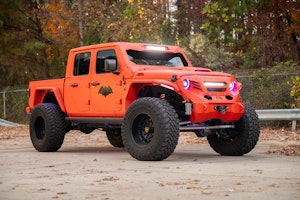
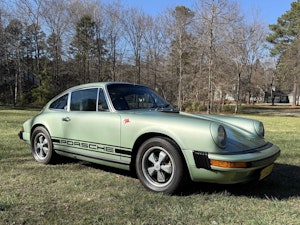
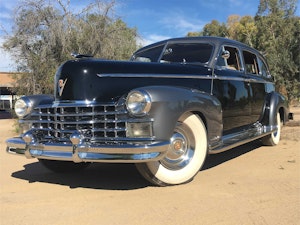
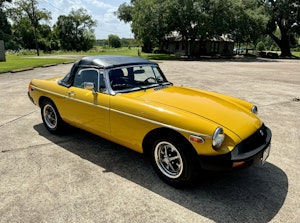
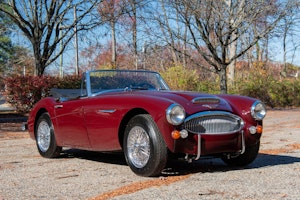
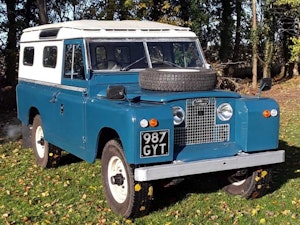
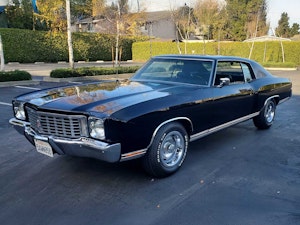

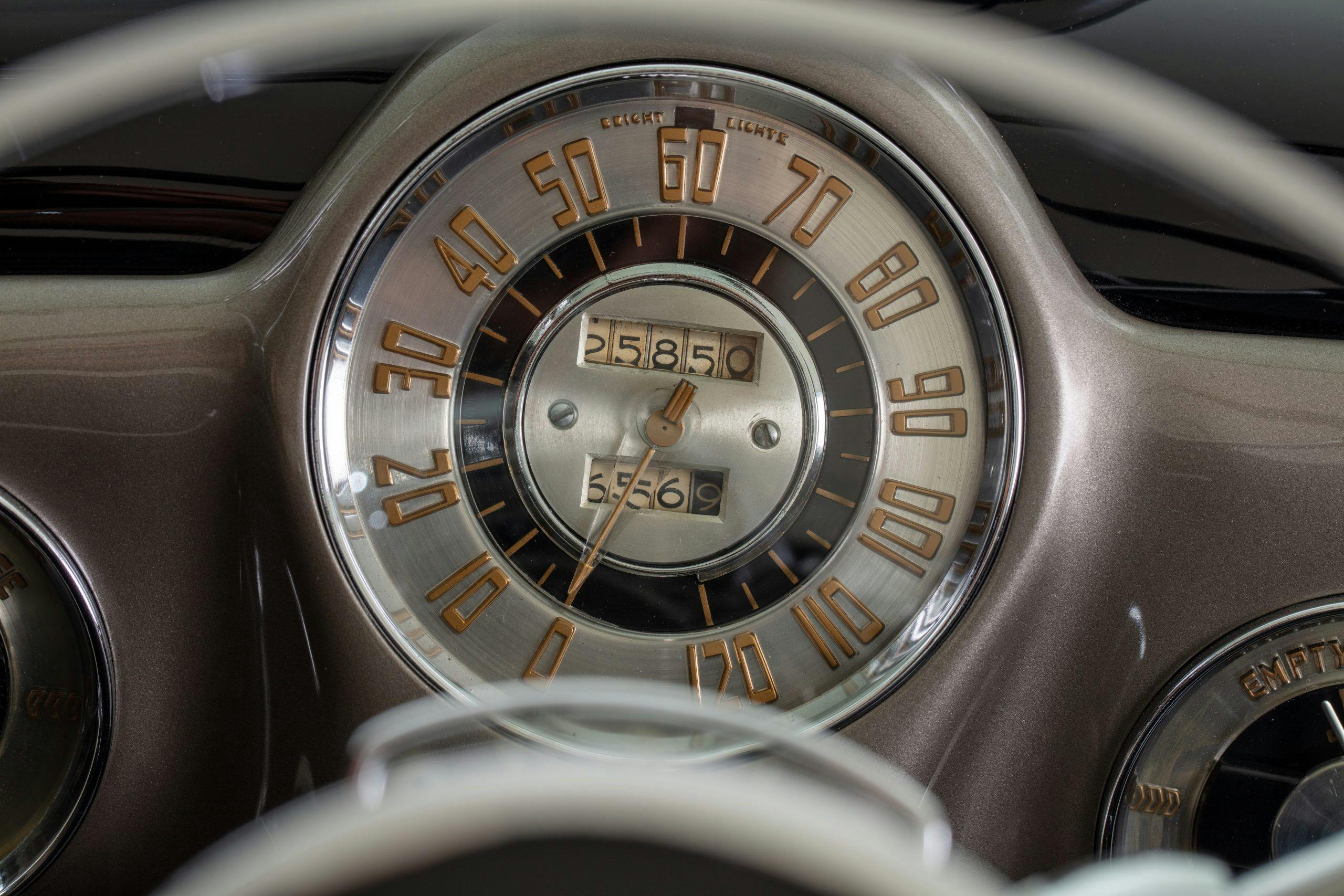
















A stanza in the 1960 song “Poetry in Motion” best describes my thoughts about this beauty:
I love every movement
And there’s nothing I would change
She doesn’t need improvement
She’s much too nice to rearrange
Was only one Y-Job manufactured?
Concept cars always intrigued me. I was born in the 50s and as a kid I was intrigued with cars. The rocket ship style of some of the fifties concepts as well as early car customizers amazed me. The Buick Y job invokes the dream of what it could be back then. I think the Cord, with front wheel drive, and hide away headlights was a rolling concept. Going to the NY Worlds Fair and visiting the GM pavilion in 1963 I thought we’d be in flying cars now. Good to dream anyway.
The Y job is a truly impressive car which I’ve seen a few times in the “flesh” as it were. The best viewing was in 2016 at the Buick Club of America National meet in Allentown Penn when Nicola Bulgari was entertaining the Club at his place. My 16 yr old son and I were hanging around in the restaurant lounge area to escape the heat and were right by the door when Mr Bulgari himself drove around and then parked it a few few in front of us!
It was fabulous to see it running and driving right there.
That it’s stunning car so many years after it’s conception is a testament to Mr Earl and his team.
Keith Corby
What’s with all the tacky speed strips on the front and rear fenders? Good design doesn’t need nervous tics like that. What, exactly, did Harley Earl d o, other than design fluff that culminated in the massive waste of annual style revisions and the hideous 1958 GMobiles?
Even the ridiculous car in the 1937 Cary Grant/Constance Bennett farce, Topper, built on a stock ’36 Buick Roadmaster chassis, bodied by Bohman & Schwartz, Pasadena (formed by ex-Murphy employees) was better than the above. The grille made it onto the ’42-on Buicks.
It’s hilarious what people will salute, thinking i’d better like this or i’m not a real car guy. WTF? You want a lovely limited production car of the era, look at a 1938-40 Packard Darrin, or the ’39 Zephyr Continental prototype, ’40-’41 Continental, the latter included in MoMA’s autumn, 1951 exhibit “8 Automobiles.” Even a bone stock 1940 Buick Super or Roadmaster, standard ’40 Series 62 Cadillac, ’41 Packard Clipper have it over the above doofusmobile.
The guys writing these paeans clearly know little about the cars or tenor of the times, so they wax eloquent about monstrosities like the above because there’s no research required. And, again, why are we worshipping Harley Earl, or for that matter, Raymond Loewy? What about Count Alexis de Sakhnoffsky, Ray Dietrich, Werner Gubitz, Phil Wright, Dutch Darrin, if we’re going to ignore the more interesting engineers?
I think you are overlooking the significance of this car. It was the first Concept or “Dream” car ever built. Most people appreciate it for that, not it’s beauty, or lack thereof. Harley Earl was responsible for all the GM cars of the fifties when GM dominated the car market styling. His team designed the Motorama cars like the ’53 Buick Skylark, the Cadillac Eldorado and the Oldsmobile Fiesta convertibles. I remember when these cars hit the road and revolutionized automobile styling. He was responsible for a few clunkers like the ’58 Buicks and Oldsmobiles but also the very popular Chevy Impala’s and Pontiacs of that year. And don’t forget the revolutionary ’55 Chevrolet which turned out to be one of the most popular cars of all time.
When you say Raymond Loewy, I think 1953 Studebaker! Way ahead of it’s time. Still looks good today.
This car is a rolling testament to GM’s dominance in the ’50s and’60’s. It’s daring, futuristic, yet familiar and attainable by those with the wherewithal. Myself, I like the LeSabre better, but that’s me- this is a much more useable vehicle that could have been mass produced. Perry Mason would sport this- all those Mercurys aside, this is Atty. Mason’s ride. I’d like to think that after all those primrose over black Mercury convertibles, Perry would have used that lawyer money to buy this Buick. It’s all fiction, yes?
The interior is the better part of this design. the exterior is good except for the tacked on lines on the car.
Good article. Neat car.
This is one of my favorite cars. I would love to see it one day.
I have always loved Buicks. I went with my parents to Flint Michigan to pickup a new ’40 Super coupe.
I feel they should have retained the original bumpers of the early “Y” Job. They were unique to the car.
Bob, a ’40 Buick Super was and is a good-looking car right off the showroom floor. Veteran mechanics said the smaller eight (248-ci 1937-49, 263-ci 1950-on) used in the Special & Super Models 40 & 50 less trouble than the Century/Roadmaster/Limited Models 60/70/80-90 320″ with its three-piece manifold.